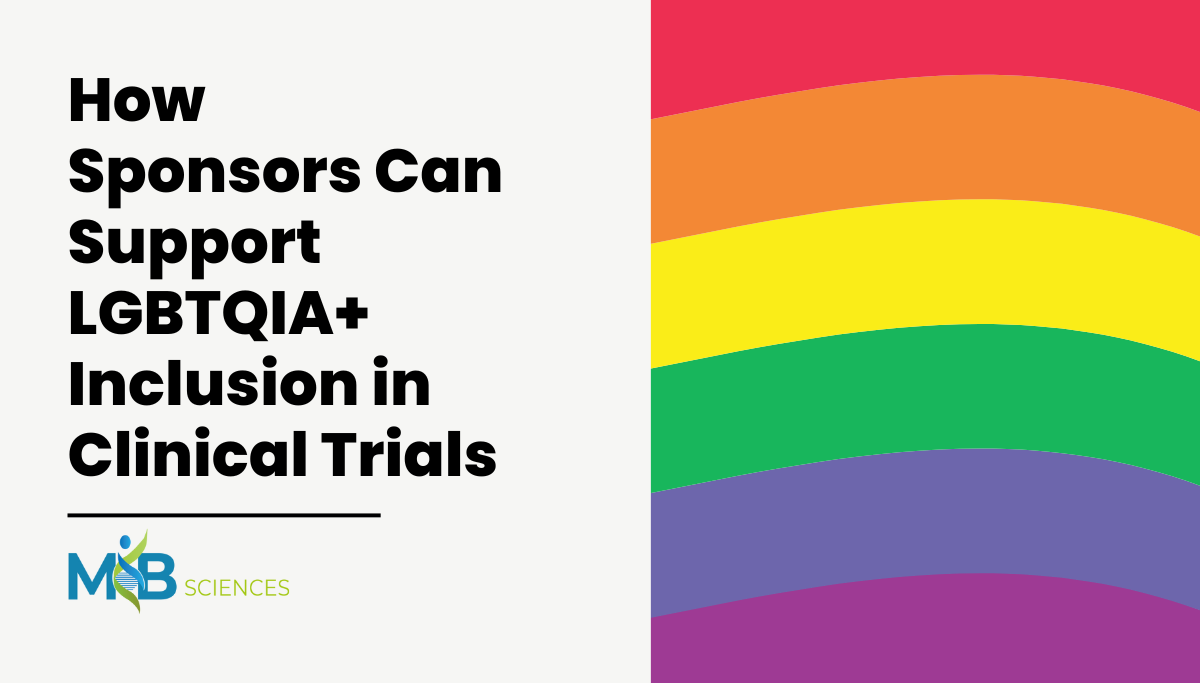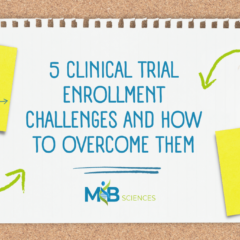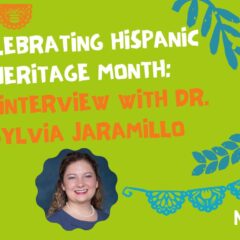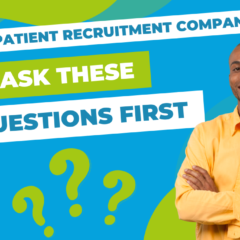How Sponsors Can Support LGBTQIA+ Inclusion in Clinical Trials
As healthcare providers improve LGBTQIA+ inclusion by making gender-affirmative care more accessible, life sciences companies should consider the role they play in making clinical trials more inclusive for these individuals as well. While they face unique health challenges, they also experience many of the same medical conditions as the broader population and can benefit from many of the same treatments.
This population has been historically underrepresented in medical research and even intentionally excluded. Lesbian, gay, bisexual, transgender, queer, questioning, intersex, asexual or nonbinary people are also more likely to face discrimination from healthcare providers, which can make them less likely to participate in research.
The most recent State of the LGBTQI+ Community survey by the Center for American Progress found that one in five LGBTQIA+ individuals, including one in three transgender or nonbinary individuals, avoided medical care in the past year due to disrespect or discrimination by providers. That includes having a provider refuse to treat them, using harsh or abusive language, or experiencing unwanted physical contact from a provider.
While the FDA has not issued guidelines specifically for promoting LGBTQIA+ inclusion in clinical trials, they have issued broader recommendations for improving diversity in patient recruitment.
Here are a few strategies clinical trial sponsors should consider.
How can sponsors improve LGBTQIA+ inclusion in clinical trials?
1. Engage patient advocacy groups for input on trial design
Advocacy groups work directly with individuals whose lived experiences offer the best insight on how to make clinical trials more inclusive to LGBTQIA+ people from the beginning, such as:
- How to eliminate bias from patient screening
- The most appropriate way to collect accurate data on sex, gender identity, and sexual orientation
- How to train clinical research professionals to be sensitive to the needs of the LBGTQIA+ community
These groups are extremely helpful in reaching the right participants because they serve as a direct connection to the patient population.
Organizations such as the National LGBTQIA+ Health Education Center, part of The Fenway Institute in Boston, offer numerous resources, including webinars, whitepapers and an annual conference to address the challenges specific to LGBTQIA+ individuals.
Large hospital systems and universities, such as the Johns Hopkins Center for Transgender and Gender Expansive Health and the Oregon Health & Science University (OHSU) Transgender Health Program, also have dedicated resources.
Consider the goal of the study and who it impacts as you develop a diversity plan to meet the FDA’s requirements. That includes outlining goals for including people of different races and ethnicities; sex, gender and sexual orientation, and people of different socioeconomic backgrounds and geographic locations.
2. Recognize and remove barriers to study participation
Advocacy groups can also be helpful in identifying potential barriers to clinical trial participation. This could include language barriers, confidentiality concerns, financial considerations and intake questions.
For instance, the CAP survey found that more than a third of transgender individuals were unable to receive insurance coverage for certain types of treatments, such as chest reconstruction or fertility treatment.
While many companies have taken steps to improve inclusion in the workplace, many individuals continue to face discrimination, which can impact them financially as well. While they report higher rates of employment compared to non-LGBTQIA+ respondents, many are also more likely to report working part-time or working low-wage jobs. More than one in three LGBTQIA+ households reported earning less than $30,000 a year, compared to one in four non-LGBTQIA+ households.
Offering financial incentives or subsidies to offset the cost of clinical trial participation, such as providing gas cards, could increase the likelihood of participation for some individuals.
3. Build trust from the beginning
Considering the negative experiences many individuals have had with healthcare providers and insurance companies, physicians and clinical trial staff will need to do more to build trusting relationships with patients.
The patient screening process should be inclusive and relevant to the study. A recent webinar by the National LGBTQIA+ Health Education Center cited a previous study that found while 78% of US clinicians believe patients would refuse to answer questions about sexual orientation or gender identity (SO/GI), only 10% of patients who were surveyed said they would refuse. Most believed SO/GI data collection was important to the trial.
Keep in mind that some patients may want to understand why questions about sexuality and gender are asked, so be prepared to offer an explanation. Always offer the option to avoid answering these questions, and emphasize all data will be kept confidential.
Recruiting patients for any clinical trial can be challenging as sponsors strive to identify people with specific conditions while also meeting diversity goals. Many recruiting firms primarily use digital marketing to target relevant populations, and they often use demographic data that is outdated or too general.
A patient recruitment firm with expertise in spatial epidemiology data, or data on the distribution of disease and determinants of health within certain geographical areas, may be helpful here. This data can help identify health conditions and environmental factors that are more likely to impact LGBTQIA+ people.
Having the most accurate, up-to-date data on target populations reduces enrollment times and marketing spend.
5. Adopt enrollment and retention policies that promote inclusion
Advocacy groups and other community organizations can help clinical trial sponsors ensure trial sites include locations with higher concentrations of LGBTQIA+ individuals and specific outreach to attract these patients, such as recruiting during events they are likely to attend.
Consider other challenges participants may face throughout a trial.
For instance, the National Network for Youth found as many as 40% of young people experiencing homelessness identify as LGBTQIA+, although these individuals represent less than 10% of the US population.
Given these concerns, your clinical trial sites may need to consider offering alternate locations or expanded hours. You may want to consider removing requirements for patients to provide a physical address.
Establishing ongoing communication with patients throughout the trial, including ways to promptly address any questions or concerns they may have, can also promote an inclusive environment.
How can M&B Sciences improve LGBTQIA+ inclusion?
As a patient recruitment firm that specializes in recruiting diverse populations, M&B Sciences is uniquely equipped to help you achieve your clinical trial goals. We have more than 20 years of expertise in spatial epidemiology and access to proprietary data models to enable efficient, cost-effective recruiting. The partnerships we’ve developed with hundreds of community organizations and advocacy groups help us build trust with historically underrepresented populations who may be less aware of their options for participating in trials or be less likely to participate due to other barriers.
We’ve also developed technology to make it easier for people to find clinical trials close to home with our NeighborhoodTrials app.
To learn more about how we can help improve LGBTQIA+ inclusion in your trial, schedule a consultation with us.



